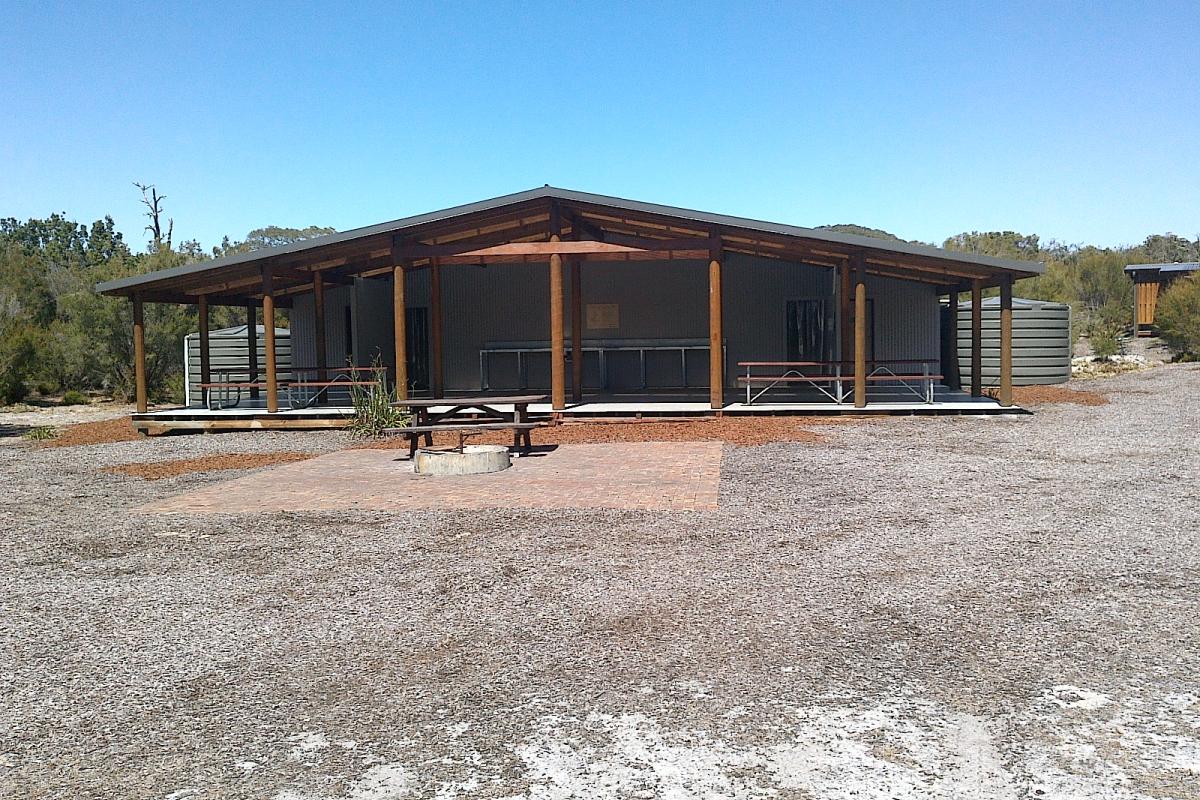Yeagarup Hut was built in 2008-09 and is located between the Yeagarup Dunes and Beach.
The Hut is a spacious shelter with enclosed sleeping areas, picnic tables and toilets. A large, flat area surrounding the Hut provides ample space for camping. It is suitable for large groups.
Yeagarup Hut is managed on behalf of the Parks and Wildlife Service by Pemberton Discovery Tours and to stay you must book by calling Pemberton Discovery Tours on (08) 9776 0484 or by visiting their website.
Safety information
Plan when to visit. Consider traveling with a personal location beacon (PLB). In the event you need to be rescued it could save your life!
Western Shield - The Department of Biodiversity, Conservation and Attractions undertakes 1080 baiting at this location to reduce the impacts of feral cats and foxes on native wildlife.
Meat baits containing 1080 poison are laid in or around this area on an ongoing basis. 1080 is poisonous to humans and will kill domestic cats and dogs. Pets are not permitted in this park.
For further information contact your local Parks and Wildlife Service office or visit Western Shield.
Gallery
Facilities
Barbecue
Toilet
Sleeping shelter
Picnic table
Activities
 Bushwalking
Bushwalking
 Camping
Camping
 Canoeing and kayaking
Canoeing and kayaking
 Fishing
Fishing
 Four-wheel driving
Four-wheel driving
Plants, wildlife and fungi
Visit the Atlas of Living Australia for a list of species recorded within a 5km radius of Yeagarup Hut.
Traditional Owners
We recognise and acknowledge Minang and Bibbulman people as the traditional owners of D'Entrecasteaux National Park.
There is evidence that Noongar people have lived in South-West Australia for over 47,000 years. The oldest archeological evidence at D’Entrecasteaux is dated at 6000 years, although this does not mean it wasn’t occupied early than this. Erosion of sand dunes within the park has revealed numerous stone artifacts, fish traps, quarry sites, mythological and burial sites. The majority of these are located around the Lake Jasper/ Meerup Dunes area, an area of particular archeological and cultural significance to the Noongar people. Artifacts have been found 10 metres below Lake Jasper’s current water levels, indicating a number of major campsites existed here when the lake was a prehistoric forest.
Wandjoo ngaalang kwoba/moorditj boodjar,
Nyoondool djinang ngaalang kwobidak Wardan, balyoongar, bilya, worl wer djinda kada werda ngaalang miya,
Ngaalang koort kalyakoorl nidja.
Welcome to our good/strong country,
You will see our beautiful sea, sand, rivers, sky, and stars across our place,
Our heart always here.

